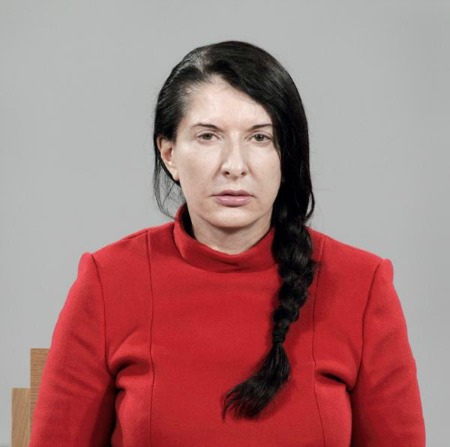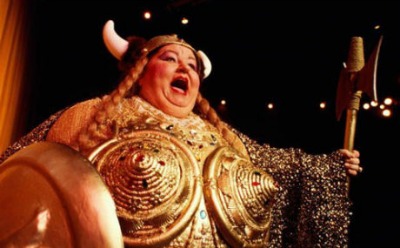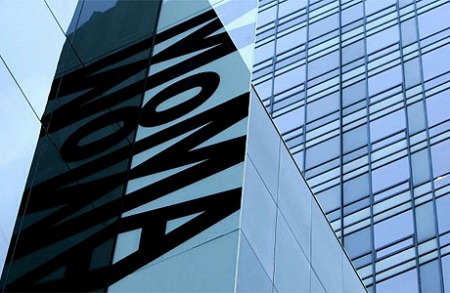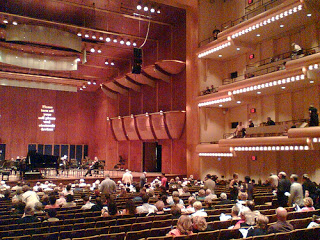Is “Duration Art” a real category or just a Marina promotion? Duration Art is the catchy Artopia term; Abramović awkwardly calls the art she supports and wants to preserve “long durational work.” She defines LDW as “any work (of music, opera, film, theater, performance art, science, and others) whose performance exceeds six hours.”
We certainly appreciated her The Artist Is Present at MoMA, and understood, because of her previous recreations of Performance Art classics under the title of “Five Easy Pieces” at the Guggenheim in ‘05, that this stare piece in which she sat and stared at all comers one-by-one for days alone in the MoMA Atrium was well-grounded in durational precedents such as Vito Acconci’s Seedbed (1972) and Joseph Beuys’ How to Explain Pictures to a Dead Hare (1965).
Duration Art is Endurance Art. It always tests the endurance of the audience. And if there’s a performer, it also must be an endurance test for him or her, even if there is no audience. Good examples of the latter would be Tehching Hsieh’s brilliant year-long artworks. In the most famous of these he was tethered to Linda Montano for 12 months.
Former-novitiate – she went into training to be a nun — Montano herself has created many extreme duration pieces, of which the most famous now is probably Seven Years of Living Art (1984-1991) in which she dressed in the same color for a year, a different color every year to correspond to a specific chakra. She also periodically gets done up as the spitting image of Mother Teresa and goes around blessing people.
Lady Gaga Studies With Marina!
Because of the recent Gaga/Marina publicity storm – Gaga studies the Marina Method to prepare for a music video; Gaga is nude for kickstarter promo; Mama Marina turns on Gaga – “everyone” now knows that the self-appointed Mother of Performance Art is formulating an institute for performance art, up the river in Hudson, N.Y., focusing on works of extreme duration, including her own.
A promotional video by Abramović explains that visitors will have to sign an agreement to stay for a minimum of six hours. They will strip and wear white lab uniforms and sound-cancelling earphones. Visitors who fall asleep during a performance will be wheeled out.
No such luck I bet for performances of Robert Wilson’s “opera” The Life and Death of Marina Abramović. I like the YouTube snippets I’ve seen, featuring either actor Willem Dafoe or pop singer Antony Hegarty. Alas, I have slept through Wilson’s earlier works far too often to be much of a fan. But imagine: An opera about a living artist, featuring the artist herself. Oops. This one is not six hours long, so according to Marina’s definition it is not Duration Art. What was Robert Wilson thinking? Trying to please the masses?
Sounding Off
Moving forward, I think Sound Art of a certain kind may be included under the currently chic Duration Art rubric.
Abramović-approved Endurance Music listed on the MAI website:
- La Monte Young: The Well-Tuned Piano, (1964/1973/1981/present). Up to 6 hours.
- Richard Wagner: Der Ring des Nibelungen, (1848-1874). 15 hours.
- John Cage, Organ²/ASLSP (As SLow aS Possible), (2001-2640). 639 years.
And then there’s the Light Art category, totally avoided by Abramović, a sterling example of which is James Turrell’s Aten Reigh at the Guggenheim (until Sept. 25). It transforms the Rotunda into a slow, 60-minute show of color changes, requiring visitors to lie on their backs. Think of this: have you ever looked at a painting for 60 minutes, even standing up? In this instance, 60 minutes feels like six hours, so it too counts as Duration Art.
We feel very strongly that Duration Art, if it lasts long enough, has room for all boring art. In Sound Art, we must expect something as long as but no less boring than an opera by Wagner, not just the complete Ring, as our Marina insists, but any opera by Wagner.
Nevertheless, the novice may ask: Is the audience expected to stay put for a certain time or is it instead an ever-changing congregation of visitors who may duck in and out with impunity?
In Artopia we prefer the latter, since unless we are meditating on a mountain or savoring ocean waves, we are mentally and physical hyperactive and have a low boredom threshold. We run at a very high speed.
Time is a prison.
If the art in question is meant to be a meditation aid and nothing else, then we do not have art: we have a meditation aid. I already have my Tibetan mandala and my Russian icon, so to speak. Inside my head.
Duration Art tests one’s patience, becomes something different as time slogs by, and is as much about time as about anything else. I don’t think Duration Art need be six hours or more, it must just be longer than what would normally be expected of the particular art form – in other words, long enough to be annoying. It must evoke the feeling that it might be enough just to have heard about it.
MoMA Music?
At MoMA, what we have is a generous selection of contemporary Sound Art, the best of which may fit into the Duration Art category.
My selection follows, with links to samples. In most cases, scroll down the MoMA page and click for sound:
Jacob Kirkegaard: Concert Room, Swimming Pool, Church and Gymnasium. Recordings made in abandoned public spaces near the Chernobyl nuclear power plant, then re-recorded. Eerie.
Tristan Perich: Macrotonal Wall. A grid of 1,500 1-bit speakers that create sounds as each visitor walks by. More elegant and more minimal than Christopher Janney’s Reach (1996) at New York’s 34th Street R subway station, which is more a musical instrument because you have to wave at it and the sounds are musical.
Susan Philipsz: Study for Strings. Leaves out all the notes except for cello and viola of a 1943 orchestral work by Pavel Haas, composed and performed in a Czech concentration camp for a Nazi propaganda film. Within a year, Haas and most of the performers were killed in a gas chamber. Powerful. Heartbreaking.
Sergei Tcherepnin: Motor Matter Bench. A well-worn subway bench that offers sounds you mostly “hear” with your bottom. Visitors exhausted from too much visual art hardly seemed to notice. Information but no sound sample.
Stephen Vitiello: Bell Study. Recordings of 59 bells – N.Y. Stock Exchange, U.N., etc. One plays on the minute every minute, then all together at the top of the hour. Another sit-down piece, but located in the MoMA garden. Entry to the garden is free, beginning Sept. 9, 9 to 10:15 a.m., chairs provided.
Jana Winderen: Alterfield. Recordings of underwater creatures communicating in the inaudible ultrasound range, lowered in pitch so we humans can hear what they are saying. Maybe not what they are saying, but how they are saying or singing it. Orchestrated found sounds.
The Take Away — Not Duration Art Defined or Duration Art Expanded but . . .
Art museums like MoMA are the last bastions of the avant-garde productions of formerly self-sustaining art forms such as music and dance, now mired in conservatism. We may tackle contemporary dance some other time. Suffice it to say, dance is being destroyed by stodgy dance criticism and mingy funding. On the other hand, concert music is being killed off by the insatiable demand for warhorses and the fact that concert hall seats now offer the most expensive nap time anywhere. Orchestra seat at the Philharmonic: $148 for two hours vs. MoMA adult ticket: $25 for all day. And if you don’t like the music at the museum, you can look at the art. Or eat a sandwich.
Call it Sound Art, but it still sounds like music to me, even if you have to go to a museum to hear it.
John Perreault is on Facebook. Links for John Perreault website & John Perreault’s art.





